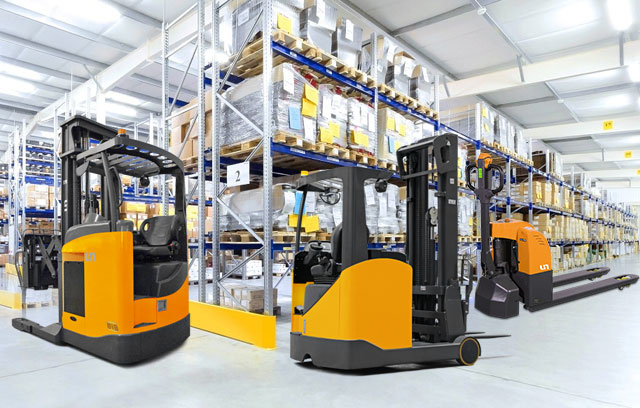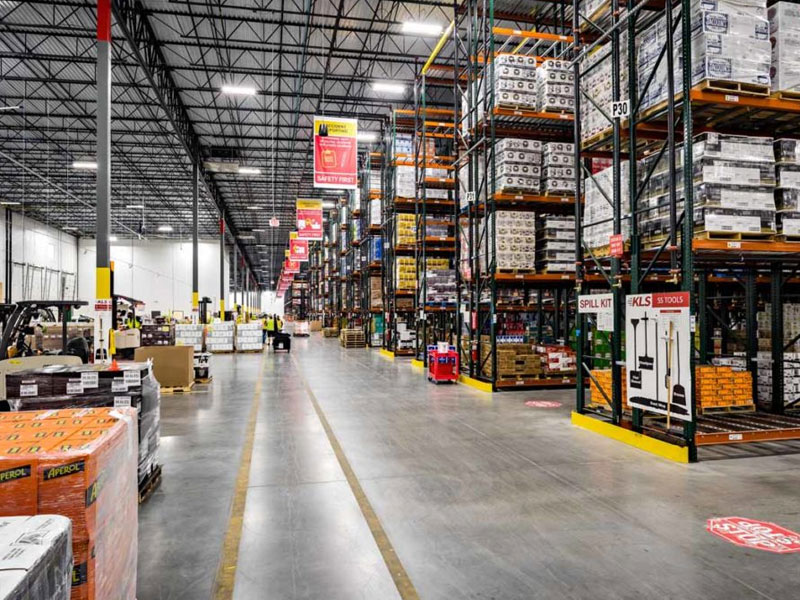electric forklifts can be integrated into both automated and semi-automated material handling systems. The integration of electric forklifts into automation systems enhances efficiency, accuracy, and overall productivity in warehouses, distribution centers, and manufacturing facilities. Here are some ways electric forklifts can be incorporated into these systems:
Automated Guided Vehicles (AGVs):
AGV Integration:
Electric forklifts can be equipped with AGV technology, allowing them to operate as Automated Guided Vehicles. AGVs follow predefined paths or use navigation systems to move autonomously within a facility.
Navigation Systems:
AGVs often use various navigation systems, such as laser guidance, magnetic tape, or vision-based navigation, to navigate through the facility without human intervention.
Task Automation:
AGV-equipped electric forklifts can be programmed to perform specific tasks, such as picking up pallets, transporting goods, and delivering them to predefined locations.
Interfacing with Warehouse Management Systems (WMS):
AGVs can interface with WMS to receive real-time task assignments, update inventory data, and communicate with other automated systems in the facility.
Semi-Automated Systems:
Collaborative Robots (Cobots):
Electric forklifts can collaborate with robotic systems, known as cobots, to automate specific material handling tasks. Cobots and forklifts can work together to optimize workflow and improve efficiency.
Automated Palletizing:
Electric forklifts can be integrated into automated palletizing systems where they pick up pallets, transport them to palletizing stations, and work collaboratively with robotic arms to stack or organize goods.
Automated Retrieval Systems:
In facilities with automated storage and retrieval systems (AS/RS), electric forklifts can work in conjunction with these systems to retrieve and transport items to and from storage locations.
Conveyor Systems Integration:
Electric forklifts can interface with conveyor systems for seamless material flow. They can load and unload goods onto conveyors, allowing for continuous and automated material transport.
Barcode/RFID Scanning:
Electric forklifts can be equipped with scanning technologies such as barcode or RFID scanners to identify and track goods as they move through the facility. This data can be integrated into automation systems for accurate inventory management.
Integration with Automated Warehouse Systems:
Electric forklifts can integrate with broader automated warehouse systems, allowing for real-time communication, task coordination, and optimization of material handling processes.
Benefits of Integration:
Increased Efficiency:
Automation improves the overall efficiency of material handling processes by reducing manual intervention and streamlining workflows.
Accuracy and Precision:
Automated systems enhance accuracy in tasks such as picking, placing, and stacking, leading to reduced errors and improved inventory management.
Optimized Resource Utilization:
Integration allows for better utilization of electric forklifts, minimizing downtime and optimizing their usage based on real-time demand.
Enhanced Safety:
Automation can contribute to improved safety by reducing the need for manual handling in certain tasks and minimizing the risk of accidents.
24/7 Operation:
Automated systems, including electric forklifts, can operate continuously, enabling 24/7 material handling operations.
Scalability:
Integrated systems can be scaled to accommodate changing business needs, providing flexibility for future growth.
Integrating electric forklifts into automated or semi-automated material handling systems aligns with the trend toward smart warehouses and Industry 4.0 practices, contributing to more agile and efficient supply chain operations.











 中文简体
中文简体 عربى
عربى Español
Español














